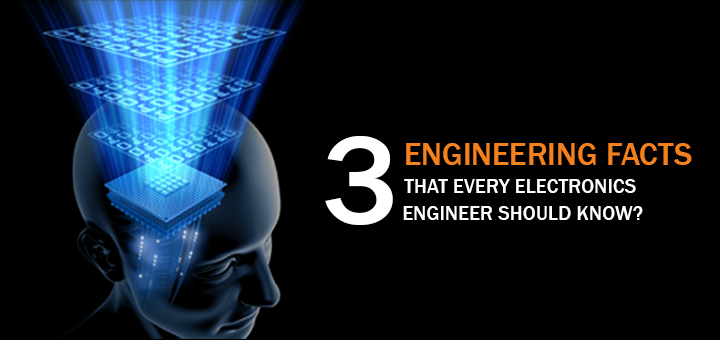Electronic Engineering is a discipline of electrical engineering where non-linear and active electrical components are used to design electronic devices, circuits, VLSI devices, and their systems. The active electronic components consist of semiconductor devices such as diodes, transistors, and IC (Integrated Circuits).
Every electronics engineering must know the three basic engineering facts mentioned below
Electronics is a branch of Electrical Engineering
Electrical engineering generally comprises of five elements
- Generation (V): Creating electrical energy.
- Transmission (I): Moving electrical energy from one point to another.
- Utilization (R): Using electrical energy in devices.
- Measurement (V=IR & P=VI): Quantifying electrical parameters.
- Control: Managing electrical systems.
The fifth element differentiates electrical and electronics. When the control is manual such as switch and regulator, it falls under mechanical engineering. When the control is automatic through relays, it falls under electron magnetics. On the other hand, when the control is automatic through vacuum tube transistors, it falls under electronics.
Substitutes for Transistor, Gate, and Amplifier
Every electronics engineer should know the originality of transistors, gate, and amplifiers.
- A transistor is just a variable resistor.
- A gate is just a switch.
- An amplifier is just a regulator
The truth behind IC’s
Definition and Function:
An Integrated Circuit (IC) is a compact assembly of electronic circuits fabricated on a silicon chip. ICs integrate numerous transistors and components into a single package, simplifying complex circuit designs.
Technological Impact:
- Transistor Count: Modern ICs contain billions of transistors, with sizes around 10 nanometers (nm). This miniaturization enables advanced technology and high-performance computing.
Significance:
ICs are foundational to modern electronics, from everyday gadgets to sophisticated computing systems.
Conclusion:
FAQs
What is the difference between electronics and electrical engineering?
Electronics is a subfield of electrical engineering focused on designing and working with active components like transistors and ICs. Electrical engineering encompasses a broader range, including generation, transmission, and control of electrical energy.
How do transistors function in electronic circuits?
Transistors act as variable resistors, allowing control over electrical current flow. They are essential for switching and amplification in electronic circuits.
How does electronics differ from mechanical engineering in terms of control systems?
In electronics, control systems often use automated methods through components like relays and transistors, whereas mechanical engineering typically involves manual controls like switches and regulators.
Can I get hands-on experience with electronic components and systems through CADD Centre’s courses?
Absolutely, CADD Centre courses are designed with practical components, including lab sessions and project work. You will get hands-on experience with electronic components, circuit design, and troubleshooting, enhancing your practical skills and understanding.
What are some practical applications of electronics in engineering?
Electronics in engineering are essential for designing and controlling devices and systems using components like transistors and ICs. They enable automatic control, distinguishable from manual methods, and are fundamental in powering everything from simple gadgets to advanced computing systems. These applications bridge electronics with electrical engineering, driving technological innovation.




